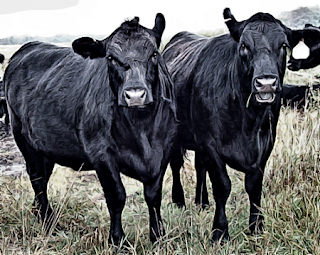I have been putting together lately information to share on health and nutrition using whole foods, herbs, and supplements as needed to maintain and improve overall health. There is a lot of books, websites, and information in general out there to learn from. The process of just trying to sort through it all and 'know' what is right for an individuals genetic and ethnic make-up in accordance with your environment can be a daunting task. I just go with instinctively 'feels' right to me. I will try to brings things together hopefully in a easy and quick to read format. I will post links and names of books I reference for your further research enjoyment.
This has been an on going process for about 10-12 years now. Longer if I take into account my experience with typical store bar soaps, shampoos, etc about 20 years ago. When things don't seem to improve or work as everyone says they should. I don't know about anyone else but I start to question things. Maybe it's the scientist in me, just plain curiosity, or both. It starts me on a path of learning and discovery to say the least.
In the next few blogs I will try to cover areas of interest for example, eye health and what herbs, vitamins, amino acids, and minerals aid in that. What foods contain those specific nutrients. I think it helps to know what foods a person can also incorporate into one's diet to help maintain or boost optimum health. I will post some recipes I use and have created on my own in my learning process. It is amazing what can be done to improve health and overall well being. I will cover the different human systems like bones and teeth, skin, digestive, etc and some specifics on nutrition.
I know first and foremost eliminating processed foods basically anything in cans, bags, and boxes that is not labeled at least organic or natural. In the end just check labels so they are not adding things like corn syrup,
preservatives, food coloring, sulfites,
sulfates, nitrates, nitrites, etc. Any food item that contain white flour, white sugar, corn syrup, some cooking oils, soy products, meat that is raised in factory farm type
conditions, etc should be eliminated. I really strictly shop the organic and fresh fruit and vegetable section of the super market for things I don't grow myself. Other things I check online and try to buy directly from the farmers as much as possible.
Since the government got involved in the organic standards there is a lot of things that are sliding by that should not be. Also buy from companies that have a reputation of up holding the organic and sustainable standards not all of them do. I know people say what is left to eat. Lots really you just have to learn how to pull all the right stuff together and not support those who don't really care about our health and the earth's just their bottom line profits. I will post website links to places I shop online also.
I don't advocate a completely vegan or high meat diet. Just 2 of us for instance eat like a pound of hamburger in about 3-4 days depending on what all I add to it. Like when I make soups, stews, Italian type dishes, etc. A whole breast of chicken (2 halves) we eat in 2 days one person normally might eat that in one day. It is really dependent on what I am making at the time. All this might last longer if I make oriental type dishes with lots of vegetables and greens. I raise my own beef, chicken, and eggs. All my animals are raised on a largely forage based diet with the exception of younger animals and winter time I feed some grains and seeds to help maintain body temperature.
I use sea salt, kelp, seaweed, lots of herbs wild (aka weeds) and garden types, onions, garlic, and spices to add flavor to my creations. I do use some soy but it is organic and fermented in the traditional old ways. I buy soy sauce and miso at this point. I am looking into natto in the future. I also make yogurt, kefir, sometimes cream cheese, sour cream, and some cheeses that are easy to make at home. I buy organic otherwise. We buy local honey. We don't eat lots of fish it is hard to find the good stuff and expensive. What I do buy is wild caught not 'farmed'. We eat very little pork just because it is hard to find them raised on forages and outside so they can enjoy just being a pig and then not pumped full of nitrates and nitrites to preserve the hams and bacon.
Do look around for local farmer's markets and get to know those who are there. Ask questions about how they raise their 'food stuffs' and how they process it. This will tell you a lot about the people and if you would like to be a customer. You might get sticker shock though. Please do not let that deter you start off slow at first if needed it all works out in the end and your body will thank you for it in the long run.
Here is a list of websites I buy from in bulk or odds n ends I need in my daily cooking.
http://www.fungi.com/
http://www.naturalimport.com/our_mission
http://www.naturalwaymills.com/
http://www.oasisdate.com/
http://mama-ganache.com/
http://www.purcellmountainfarms.com/index.htm
http://www.happyherbalist.com/
http://www.nuts.com/
http://www.organicvalley.coop/ ( Look for a store near you)
Love and light
Liana





